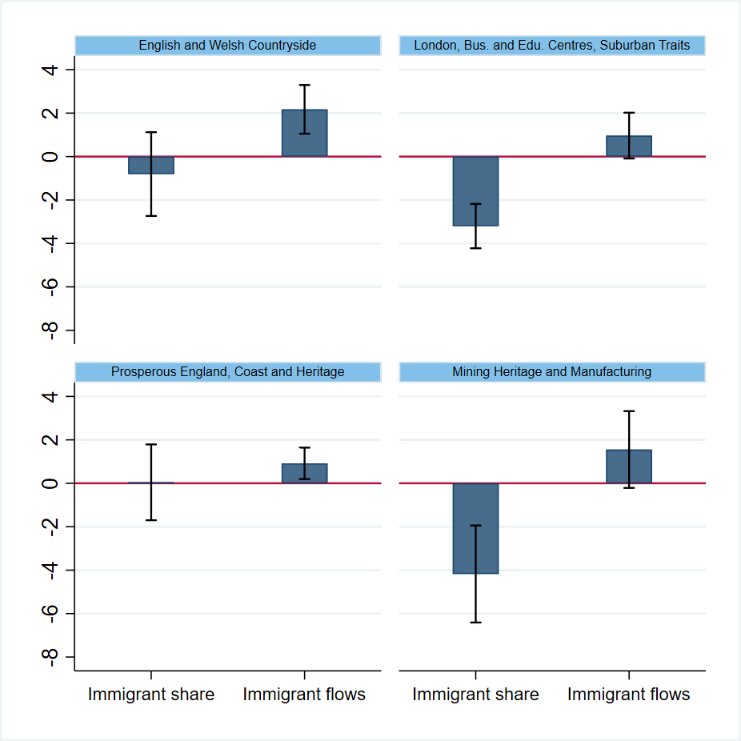GLO Policy Note No. 4
Theme 2: Inequalities and labor markets
Theme 3: Future of Work
Working from home and income inequality in the time of COVID-19
A case study of Italy
by Luca Bonacini, Giovanni Gallo, Sergio Scicchitano
- Luca Bonacini (University of Modena and Reggio Emilia, GLO)
- Giovanni Gallo (Sapienza University of Rome, University of Modena and Reggio Emilia, GLO)
- Sergio Scicchitano (National Institute for Public Policies Analysis – INAPP, GLO)

Luca Bonacini 
Giovanni Gallo 
Sergio Scicchitano
In a recent GLO Discussion Paper and just published in the Journal of Population Economics (Bonacini et al., 2021), we explore the potential consequences in labour income distribution of long-lasting increase in Working From Home (WFH) among Italian employees. Results show that an increase in WFH would be associated with an increase in the average labour income, but this potential benefit would not be equally distributed among employees. Specifically, an increase in WFH would favour male, older, high-educated, and high-paid employees. This “forced innovation” thus risks to exacerbate pre-existing inequalities in the labour market. As a consequence, this study suggests a series of policies aimed at alleviating inequality in the short run and, more importantly, that should play a rebalancing role, in the long run.
____________________
What we should know
- To limit the number of deaths and hospitalisations due to the novel coronavirus, most governments decided to suspend many economic activities and restrict people’s freedom of mobility.
- In this context, the opportunity to work from home (hereinafter called WFH) became of great importance, since it allows: employees to continue working and thus receiving wages, employers to keep producing services and revenues, and overall limits infection spread risk and pandemic recessive impacts.
- Recent estimates for the US show that between February and May 2020 over one third of the labour force switched to WFH, resulting in about half of workers working remotely during the pandemic. Remote workers have quadrupled to 50% of US workforce (Brynjolfsson et al., 2020). Due to uncertainty about the duration of the health emergency and future contagion waves, the role of WFH in the labour market is further emphasized by the fact that it might become a new standard (rather than an unconventional) way of working in many economic sectors, possibly resulting in structural effects on the labour market worldwide (Baert et al., 2020).
- Because of the WFH sudden prominence and growth, several studies recently investigated this phenomenon, especially with the objective of identifying the number of jobs that can be done remotely (Adams-Prassl et al., 2020; Dingel and Neiman, 2020; Mongey at al., 2020). However, the literature neglects potential effects of WFH on wage distribution and on income inequality in general.
What we do
- This study is a first to show how a future increase in WFH would be related to changes in labour income levels and inequality.
- We analyse to what extent an increase in the number of employees who have the opportunity to WFH (or at least an increase in the likelihood their professions can be performed from home) would influence the wage distribution, under the hypothesis that this WFH feasibility shift is long lasting.
- We focus on Italy as an interesting case study because before the pandemic, the WFH practice was not widespread and it is the first Western country to adopt a lockdown of economic activities (on March 11). Barbieri et al. (2020) estimated that at least 3 million employees started to WFH because of lockdown measures, and a large number started even earlier due to the closure of schools and universities on March 5. Moreover, Italy was the European country with the lowest share of teleworkers before the crisis (Eurofound and ILO, 2017) and, because of the pandemic, it had to face a massive increase in WFH in a very short time without precise legislation and adequate policies.
- Our analysis relies on a uniquely detailed dataset relying on the merge of two sample surveys: the Survey on Labour Participation and Unemployment (INAPP-PLUS) for the year 2018, which contains information on incomes, skills, education level, and employment conditions of approximately 45,000 working-age Italians and the Italian Survey of Professions (ICP) for the year 2013, which provides detailed information on the task-content of occupations. The analysis is conducted through an influence function regression method which allows to estimate the impact of marginal changes on an outcome variable distribution (see the paper for more details on the method).
What we find
- Employees with high WFH feasibility levels are more often female, older, highly educated, and among those living in metropolitan areas.
- Economic sectors being characterized by greater shares of employees with high WFH feasibility are: Finance and Insurance, Information and Communications, and Other Business Services (e.g., car renting, travel agencies, employment agencies).
- Figure 1 shows the wage gap between employees with high and low WFH feasibility and the share of WFH feasibility along the income deciles. The figure clearly shows that the wage gap is increasing along the distribution and reaches highest values in the last two decile groups, as well as the same incidence of high WFH feasibility among employees.
Figure 1 – Incidence of high WFH feasibility and wage gap in favor of employees with high feasibility levels by decile of annual income

What we suggest
WFH risks to exacerbate pre-existing inequalities in the labour market. In this respect, while during the current emergency, policies aimed at alleviating inequality in the short run (e.g. income support measures for the most vulnerable), should be implemented, long-term interventions are even more necessary in order to prevent future rise of inequalities in the labour market. These long-term policies go in three interrelated directions:
- The necessary massive reorganisation of work, particularly in the field of reengineering of production processes based on new digital technologies and on the possibility offered in terms of work from home requires new and more widespread skills.
- We need to promote through adequate economic and cultural incentives, non-compulsory education for youth coming from poorer households. This would include training courses, which would play an important role in reducing future unequal distribution of benefits related to an increase of WFH opportunities, by increasing human capital and favouring its complementarities with technology.
- Our study highlights that while most of the increase in WFH will concern women, the wage premium would be borne by male employees. In this perspective, a possible, non-exhaustive solution could be offered by policies aimed at improving work–family reconciliation, that continues to be shouldered more significantly by women. In particular, we stress the importance of an improving of public childcare and financial support to households with children.
Our study brings out several policy issues for tackling inequalities that will arise in the labour market because of the current pandemic in particular the more than probable increase in Working From Home. Our results are based on Italian data, but they may be useful to policymakers in other countries as well and, in general, where COVID-19 has forced governments and businesses to rethink production processes with a more intense and stable use of WFH.
__________________
References
Adams-Prassl, A., Boneva, T., Golin M., Rauh C., (2020). Inequality in the Impact of the Coronavirus Shock: Evidence from Real Time Surveys. IZA Discussion Paper No. 13183.
Baert, S. Lippens, L. Moens, E. Sterkens, P. Weytjens, J. (2020), How do we think the COVID-19 crisis will affect our careers (if any remain)?, GLO Discussion Paper, No. 520, Global Labor Organization (GLO), Essen.
Barbieri, T., Basso, G., Scicchitano, S., (2020). Italian Workers at Risk during the COVID-19 Epidemic, GLO Discussion Paper, No. 513, Global Labor Organization (GLO), Essen.
Bonacini, L., Gallo, G. & Scicchitano, S. (2021). Working from home and income inequality: risks of a ‘new normal’ with COVID-19. J Popul Econ 34, 303–360.
Brynjolfsson, E., Horton, J. Ozimek, A. Rock, D. Sharma, G. and Yi Tu Ye, H. (2020). Covid-19 and remote work: An early look at U.S. data. NBER Working Paper 27344.
Dingel, J. I. and B. Neiman (2020). How many jobs can be done at home? Journal of Public Economics 189, 104235.
Eurofound and the International Labour Office (2017), Working anytime, anywhere: The effects on the world of work, Publications Office of the European Union, Luxembourg, and the International Labour Office, Geneva.
Mongey, S., Pilossoph, L., Weinberg. A., (2020). Which Workers Bear the Burden of Social Distancing Policies?. NBER Working Paper No. 27085.
Note: The opinions expressed here are those of the authors and not of the GLO, which has no institutional position.
Featured image: Charles-Deluvio-on-Unsplash
Ends;








